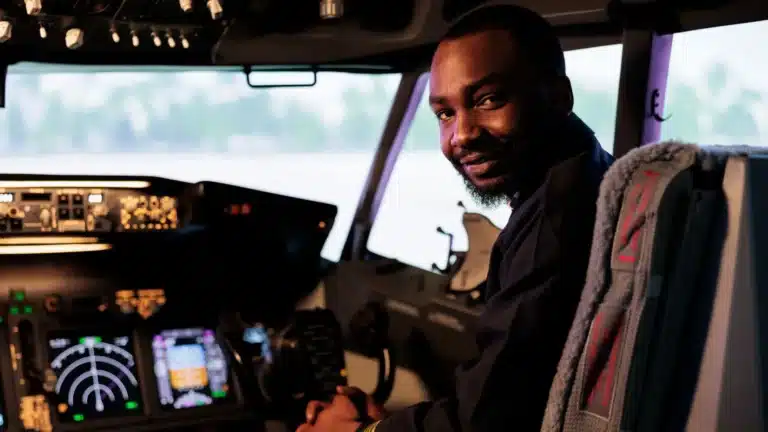Table of Contents
Paying for flight lessons is a significant financial commitment; however, varied options can make it more affordable. Aspiring pilots must consider their sources of funding carefully and understand all the costs involved. Read on to understand how to pay for flight lessons.
How to Pay for Flight Lessons
There are numerous ways in which you can pay for flight lessons. To begin with, personal savings make an upfront option. Scholarships and grants are available through aviation organizations that provide significant assistance. Some flight schools also offer payment plans, allowing students to spread costs over time.
If you are in debt, student loans or credit cards can help cover expenses, though it’s essential to calculate interest rates and repayment terms. Consider part-time work within the aviation industry that can help offset costs while gaining valuable experience. By researching and planning carefully, aspiring pilots can find a suitable way to pay for their flight lessons.
The Cost of Flight Lessons
The cost of flight lessons differs widely based on location, instructor experience, and aircraft type. On average, you need to pay between $150 and $300 per hour for dual instruction, which includes using the aircraft. Other expenses may include ground school materials, exam fees, and rental costs for solo flights.
You can invest in flight simulators or private lessons for extra practice. The total cost of obtaining a private pilot’s license can range from $8,000 to $15,000 or more. Financing options and scholarships are available to help aspiring pilots manage expenses.
Scholarships and Grants for Aspiring Pilots
Many airlines and aviation-related businesses offer scholarships and trainee programs to help students reduce their costs. Scholarships are based on academic performance, while trainee programs often involve an application and interview process. Both cover tuition and fees and may provide a stipend for living expenses. As you explore funding options, be sure to consider these aviation-specific opportunities. With diligent research, you might discover a pathway that makes your dream of becoming a pilot attainable.
Also Read: How to Save Money for a Flight
Federal and Private Student Loans
One of the significant advantages of enrolling in an accredited program is admission to federal education loans. Federal loans offer fixed interest rates, generally less than private loans. The U.S. Department of Education offers two important types of federal loans- Perkins Loans and Direct Loans. The former is designed for undergraduate and graduate students in exceptional financial need. Qualifying for these, you could borrow up to $5,500 annually for an undergraduate program. Direct Loans are based on financial needs and are mainly for undergraduate students. To apply for both, complete the Free Application for Federal Student Aid (FAFSA).
For private loans to finance your education, look into options from banks, credit unions, online lending platforms, and even personal loans from friends or family. Borrowing from friends or family needs to happen in a formal arrangement with a written contract. This should outline the loan amount and repayment terms, ensuring that both parties have a clear understanding of how and when the money will be repaid.
Using Low-Interest Credit Cards
Most pilots finance their flight school training using low-interest credit cards to cover tuition costs. Opening a new credit card is often quicker and more upfront than securing a loan. To minimize finance charges, research and compare different credit cards. Look for options with lower interest rates and no hidden fees.
Some credit card companies offer promotional periods with 0% interest for new cardholders and up to 18 months of interest-free payments on new purchases. This allows you to borrow money at no cost if you repay it on time.
Employer Sponsorship and Reimbursement Programs
Because of the complexities and uncertainty, you might hesitate to apply for scholarships and grants. Still, by not applying, you’re giving up on the opportunity for free financial aid. If you’re unsure where to start your search for free money, the FAA’s list of scholarships and grants is an excellent resource.
Explore national, state, and local options and look for funding specifically aimed at women, minorities, or other targeted groups if you qualify. Each application you submit can bring you closer to reducing and financing your education costs.
Military Assistance and GI Bill Benefits
Under current regulations, you must hold a private pilot’s license to use your GI Bill benefits for advanced flight training. If you meet this criterion, you can influence the GI Bill to obtain more advanced flight qualifications without spending out-of-pocket.
If your spouse is an active-duty service member and doesn’t intend to use their GI Bill benefits, count on having them transfer them to you. The GI Bill allows active-duty service members to gift educational benefits to their spouses or children, which can significantly ease the financial burden of flight training.
Taking advantage of these can come with many benefits and help you in your journey to becoming a pilot. By understanding and utilizing the options available, you can reduce costs and focus on achieving your aviation goals.
Crowdfunding Your Flight Training
Crowdfunding has emerged as a viable option for financing flight training, offering aspiring pilots a creative way to gather funds from friends, family, and strangers. Platforms like GoFundMe, Kickstarter, and Indiegogo enable individuals to share their stories and goals, making it easier to connect with potential supporters.
Start by crafting a compelling narrative, explain what becoming a pilot means to you, and share your progress and goals and any milestones you’ve already achieved to inspire confidence in your journey.
Consider offering incentives to encourage contributions and promote your campaign through social media to reach a broader audience who might support education and career aspirations.
Part-Time Jobs and Work-Study Programs
If you haven’t obtained your pilot’s license yet, consider taking on a part-time job to generate a steady income to help offset flight training costs. Driving for a ride-sharing service like Uber can be an excellent choice for those seeking flexibility. This option allows you to work around your flight training schedule, and your income can be directly allocated to your flying lessons.
There are alternatives like retail positions, food delivery services, or remote freelance work in areas like graphic design, writing, or programming. Make sure the jobs you choose are flexible and fit within your flight schedules.
Budgeting and Saving Tips for Flight Lessons
Start saving now, develop and discipline good spending habits, and discipline to accumulate enough funds for flight school. Choosing to become a pilot is a significant commitment and can be costly. Therefore, beginning your savings journey as soon as possible is crucial.
Start by creating a budget to assess your spending habits and look for areas where you can cut back to maximize your savings. Once you have a clear plan, stick to it diligently. Try automating your savings to make it easier and reduce the temptation to spend those funds on non-essentials.
Stay patient, consistent, and persistent, as building your savings will take time to reach your financial goals immediately.
Also Read: Cheap Flight Hacks: 6 Hacks for Cheap Air Travel
How Beem Can Help You Manage Flight Training Expenses
Create a Beem account and link your bank account. After you’ve entered your basic information, you’ll begin receiving valuable insights to help you track your budget. Your new companion, the Better Financial Feed™, will notify you of potential overdrafts, expenses, and income earned, empowering you to gain a clearer understanding of your finances.
With your linked bank accounts, Beem will create a personalized budget plan that suits your financial goals. Mark your preferences as useful, and you’ll receive timely alerts to help you avoid potential pitfalls like overdrafts, NSF charges, and bank fees. Be informed and stay in control of your finances effortlessly! Download the Beem app here.
Conclusion
Pursuing a career as a pilot is an exciting journey that requires careful planning, budgeting, financial commitment, and perseverance. By exploring various funding options – scholarships, grants, GI Bill benefits, and crowdfunding, you can alleviate some of the financial burdens as you figure out how to pay for flight lessons.
Part-time aviation-related jobs or flexible work opportunities can provide valuable experience while generating income to support your goals. Automating your savings can make the process smoother and keep you focused on your objectives.
Stay motivated, seek support from the aviation community, and show persistence on your journey to becoming a skilled and successful pilot. For financial support, download the Beem app.
FAQs on How to Pay for Flight Lessons
What scholarships are available for flight training?
Here are a few scholarships available for flight training – AOPA Flight Training Scholarships, Women in Aviation International Scholarships, The Ninety-Nines Scholarships, FAA Aviation Workforce Development Grants, Obadiah K. “Obie” Obed Memorial Scholarship, EAA (Experimental Aircraft Association) Scholarships, Local Flight Schools and Universities and State Aviation Associations.
Can I use the GI Bill to pay for flight lessons?
Yes, you can use the GI Bill to pay for flight lessons, but specific conditions must be met. You need to have a private pilot’s license before you can use your GI Bill benefits for flight training. If you hold the required license, you can apply your GI Bill benefits toward advanced flight training, such as obtaining an instrument rating or commercial pilot certification. If you are an active-duty service member or veteran, you may be eligible for different GI Bill programs like the Post-9/11 GI Bill, which often covers tuition and fees directly.
How do I budget for flight training expenses?
Budgeting for flight training expenses requires careful planning and attention to detail. Estimate the total costs and calculate your monthly income from all sources, including salary, part-time jobs, and other income streams. Identify savings and expenses, set savings goals, automate savings, and consider setting up automatic transfers to a dedicated savings account for your flight training expenses to ensure you consistently set money aside. Track your progress and review regularly to make adjustments based on changes in income or expenses.















































